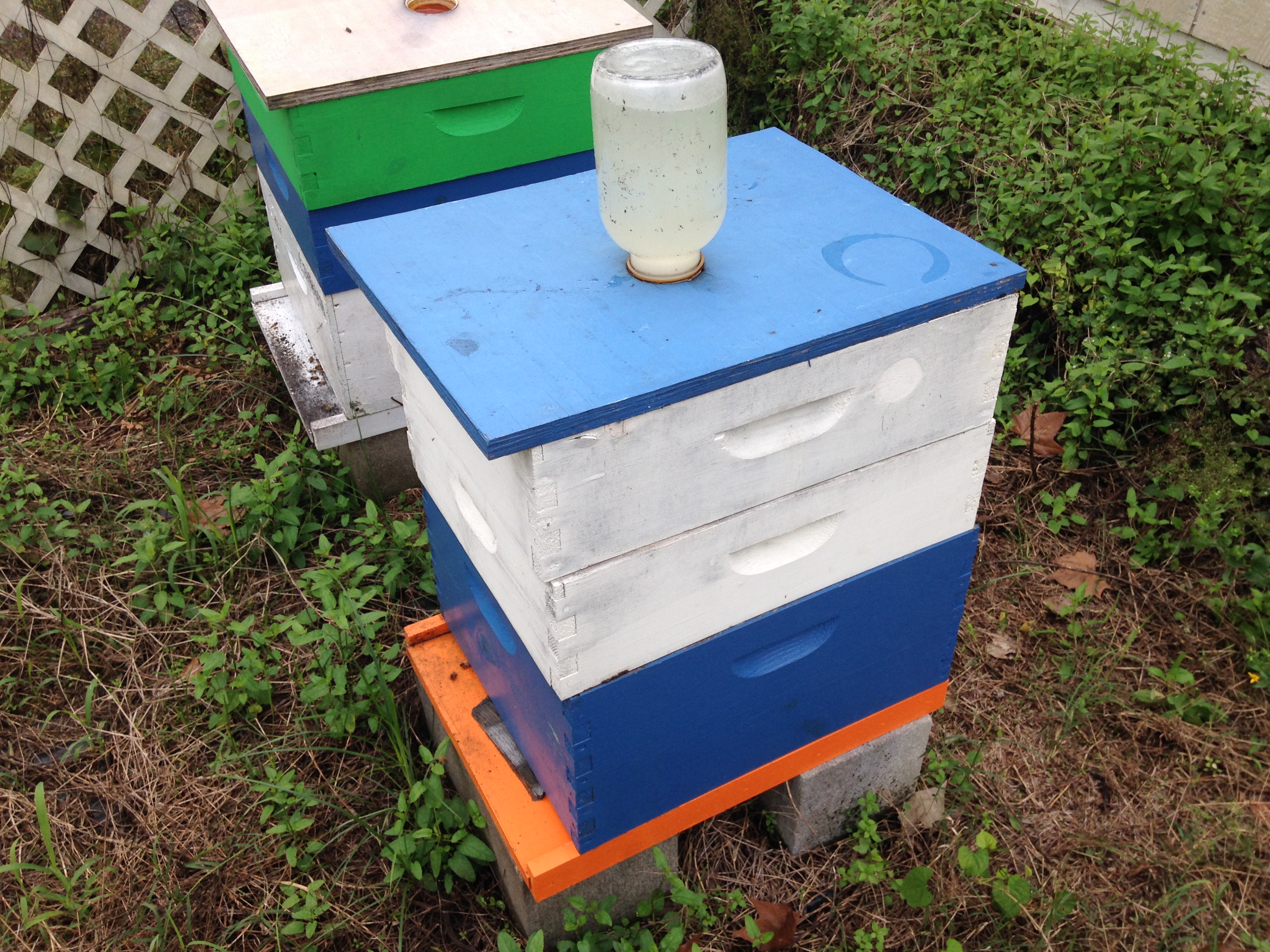
As temperatures in North Florida grow colder, honey bees may need some special attention. Photo by Evan Anderson
As temperatures in North Florida grow colder, honey bees will need some special attention. There are a number of management considerations local beekeepers need to be aware of.
Weather and Temperature
During the winter, honeybees are less able to gather enough food to support the colony. Make sure to supply them with enough nourishment to sustain them through the winter. To last through the winter, a hive needs about 80 lbs. of honey, three frames of pollen, and seven frames of brood covered by adult bees. Supplementary feeding of colonies may need to continue through March. Pollen supplements may be necessary as well.
Awareness of moisture levels in hives is important, especially in years forecasted to have abundant rainfall. Humid conditions in hives can lead to increased stress from fungal diseases, and honey that absorbs too much moisture may begin to ferment. To avoid this, keep an eye on the moisture content of the honey with a refractometer, and ensure that comb faces are exposed to air movement. Prop covers up or drill holes above handholds if needed to add ventilation to hives.

Beehive with feeding jar attached. Supplementary feeding of colonies may need to continue through March. Photo by Evan Anderson.
Pests and Diseases
Parts of North Florida are home to populations of black bears, which have the potential to become pests to beekeepers. Male bears may remain active all year, searching for sources of food. Bees kept on tall raised platforms are safe from bear predation, though an electric fence is typically the best defense. A bear that has already found and developed a taste for beehives may not be deterred; so it is best to erect a fence before bees are placed inside it.
With cooling weather, insect pest populations change along with disease pressure. Pressure from varroa mites begins to decrease in October, though treatment may still be necessary. Tracheal mite treatments, however, may begin in October – use menthol crystals or patties of vegetable oil or shortening mixed with powdered sugar as control.
Nosema disease can be especially problematic in January, and may begin to appear earlier. Medicated syrup containing fumagillin can be used to deal with this disease, with colonies needing up to four gallons to provide adequate treatment.
Finally, as winter begins to wane, it is a good idea to begin thinking about treatment for prevention of American foulbrood. Terramycin or Tylan are both good choices to prevent infection, and should be applied in March.
These are just a few beekeeping best management practices to be aware of over the coming winter months. Please see the following UF/IFAS Publications for more information.
Overwintering Honey Bee Colonies in Northern Climates
Florida Beekeeping Management Calendar
- When Grasses Collide – Centipede vs. Bahiagrass in Your Pasture - August 26, 2022
- Time to Think About Pond Weeds - March 18, 2022
- Avoiding Pesticide Resistance - September 24, 2021
